Red Mason Bees
I’ve been trying to photograph the Red mason bees again, these wild bees have been using my solitary bee boxes over the last few weeks and they are fascinating to watch. I’ve had the odd bee using the bee boxes in the past, but this year they seem to be doing really well, and on Friday I counted 8 bees going in and out, the most I’ve ever seen.
As well as trying to photograph these quick and tricky little subjects, I’ve also been watching them, as their behaviour is so interesting. Each bee, and these are all females, collects many loads of pollen which they deliver to a nest chamber where they lay a single egg. Once this food store is complete and egg laid, they seal off the chamber and then begin the process again, repeating until the bamboo cane is full, and then finally sealing off the tube with a wall of thicker mud to protect their growing offspring. Each egg develops into a bee larvae, which steadily munches away at the larder of pollen, before spinning a silken cocoon and pupating into an adult bee. This bee overwinters in it’s cosy cocoon and then emerges the following spring. So next year, hopefully I’ll be seeing even more of these characterful little creatures.
Standing by and photographing them means I was able to watch the whole process. They are quite choosy, carefully selecting a tube by zigzagging in front of the box to find an unoccupied hole. When a bee hovers too close to a hole already taken, the resident races out with forelegs waving to ward off the competitor.
Once a tube is chosen they can begin the process of provisioning the first chamber with pollen. They collect as much pollen as they can carry, often all over their furry bodies, and return to the nest to offload it. They carefully back into the hole and groom the pollen off before going out again to gather more. Using my reflector to carefully peer down one of the holes after the bee had left, I could see a great heap of sunshine yellow pollen, like a lemon sherbet fountain, and the beginnings of a mud wall, as the bee prepared to seal that particular chamber.
Once the pollen store is full and the egg laid, the bee gathers mud to seal off the nest. They carry a ball of wet mud in their jaws and return with their heavy load, carefully building a mud wall. A couple of the bees I was watching had reached the front of their bamboo canes and were busy making a thicker wall to protect the nest chambers. They are so industrious, constantly back and forth with more mud, and such determination as they build the wall. Not just dropping the ball of mud there, but carefully spreading out each piece, like a master plasterer, building it up, smoothing it out.
This last image has to be my favourite, this bee is just taking off, you can see she is still covered in pollen and if you look very closely (click to enlarge) you can see a few grains flying off. An amazing moment caught by good planning and exceptional camera work. (Haha just kidding! It was luck, sheer luck!)
For more info on these incredible animals and some wonderful images of inside a nest tube, take a look here: http://nurturing-nature.co.uk/solitary-bees-2/red-mason-bee-osmia-rufa-life-cycle-part-1/
(Click images to view larger…)
If you like what you see, please consider sharing![social_share/]

Follow me on Facebook: https://www.facebook.com/DawnMonroseNaturePhotography
Current favourite books, click for more info:
 |  |  |

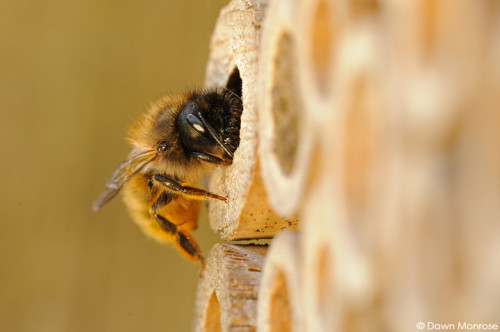

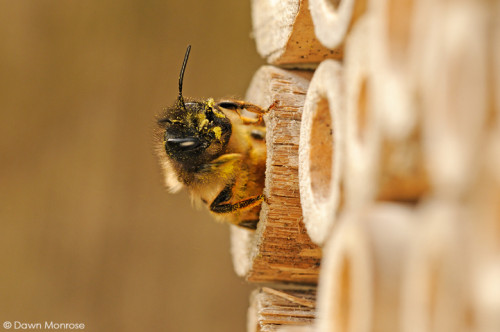
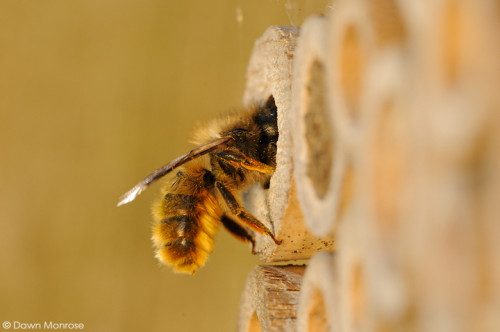

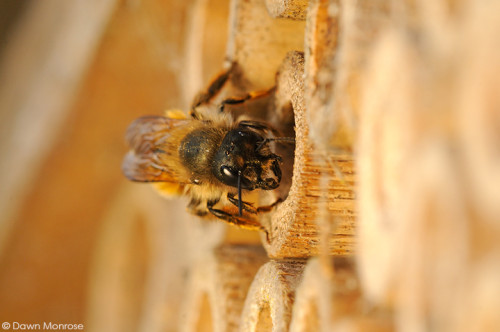
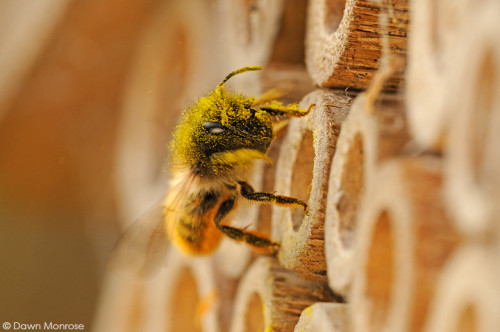
Super pictures and good commentary. Well done.
Wow, what incredible photos and excellent narrative.
Fantastic in depth photography, well done!